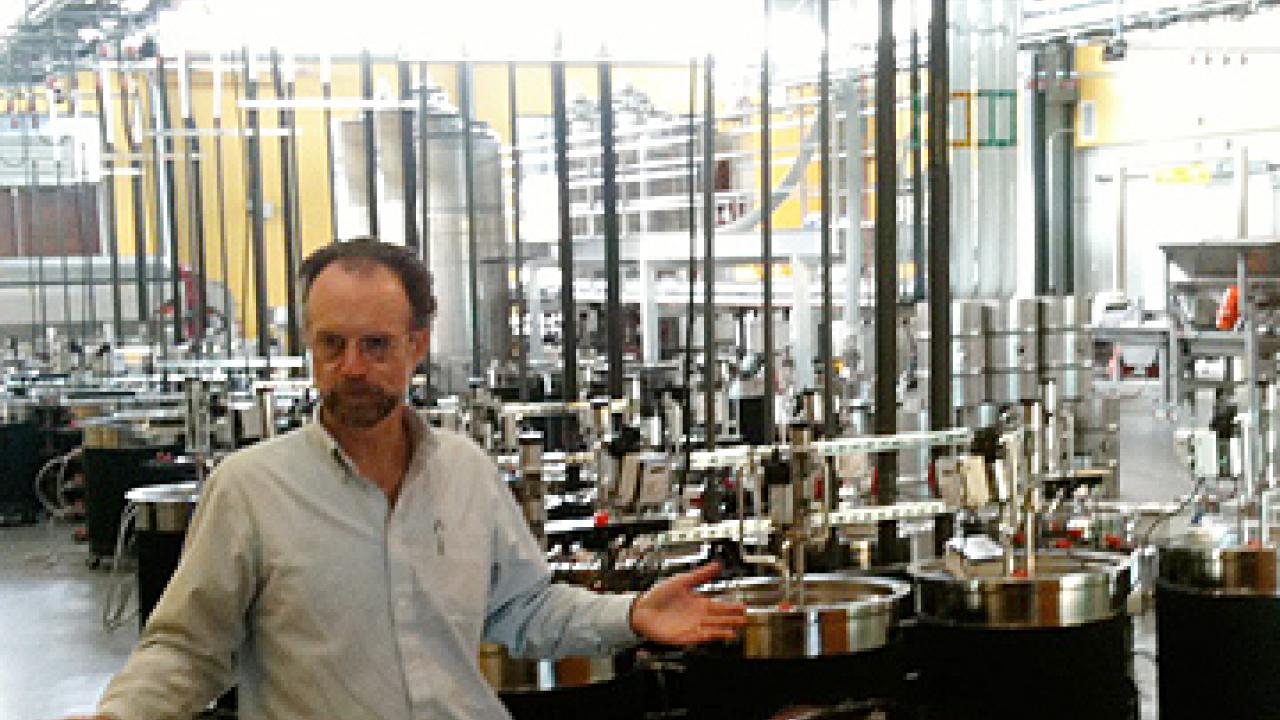UC Davis’ new winery, brewery and food-processing complex this week received official LEED Platinum certification — the highest environmental rating awarded by the U.S. Green Building Council.
Certification establishes the new building as the first LEED Platinum winery, brewery or food-processing facility in the world. A public grand opening for the new $20 million, 34,000-square-foot teaching-and-research complex is slated for Friday, Jan. 28.
The new facility, located within the Robert Mondavi Institute for Wine and Food Science, exceeded the requirements for LEED Platinum certification, earning 60 points in a ranking system that requires 52 points for Platinum certification. (LEED stands for Leadership in Energy and Environmental Design.)
The facility houses teaching and research activities for the UC Davis Department of Food Science and Technology, and Department of Viticulture and Enology. It is a complex building that was designed with a focus on water and energy use.
Among all existing LEED Platinum buildings, it is one of the most extensive in its use of rainwater and on-site energy. Rainwater is being captured, stored and used for landscaping and toilets. Another of its unique features is a system for capturing carbon dioxide from all wine fermentations.
The new complex was funded entirely by private donations; no state or federal funds were used in its design or construction. UC Davis now is raising funds to complete an auxiliary building to house the equipment that will make it possible to capture, store and recycle rainwater as the source of processing water, which, in turn, will be captured and reused up to 10 times, achieving remarkable savings in water use. The new winery, for example, will only use about one-fifth the amount of water used in a traditional winery.
Such systems are intended to eventually make the new facility self-sustaining in water and energy use. The new auxiliary building also will make it possible to further protect the environment by sequestering all carbon dioxide captured from on-site fermentations.
The new facility is only the second UC Davis building to complete the certification process. It joins the LEED Platinum UC Davis Tahoe Center for Environmental Sciences, completed in 2006 in Incline Village, Nev.
UC Santa Barbara’s Bren Hall is the only other LEED Platinum-certified building on any of the 10 University of California campuses.
The team of architects, engineers and builders for the new UC Davis building has included the following firms, all headquartered or with offices in Northern California: BNB Norcal; Flad Architects; Frank M. Booth Inc.; Red Top Electric; KPW Structural Engineers; Creegan + D’Angelo Engineers; and The HLA Group, Landscape Architects & Planners Inc.
Media Resources
Pat Bailey, Research news (emphasis: agricultural and nutritional sciences, and veterinary medicine), 530-219-9640, pjbailey@ucdavis.edu
Kat Kerlin, 530-750-9195, kekerlin@ucdavis.edu
